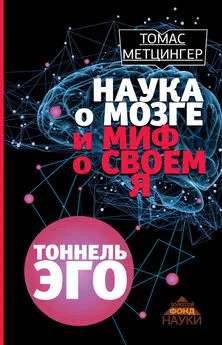Томас Гилович - Наука мудрости
- Название:Наука мудрости
- Автор:
- Жанр:
- Издательство:Индивидуум паблишинг
- Год:2019
- ISBN:978-5-6040721-7-2
- Рейтинг:
- Избранное:Добавить в избранное
-
Отзывы:
-
Ваша оценка:
Томас Гилович - Наука мудрости краткое содержание
Эта книга – для всех, кто интересуется психологией и социальным поведением людей. Она будет полезна и специалистам: исследователям, преподавателям и практикам.
Наука мудрости - читать онлайн бесплатно ознакомительный отрывок
Интервал:
Закладка:
37. Расходование денег на других людей. Dunn, E.W., Aknin, L.B. & Norton, M.I. (2009). Spending money on others promotes happiness. Science, 319 , 1687–1688. Aknin, L.B., Barrington-Leigh, C.P., Dunn, E.W., Helliwell, J.F., Burns, J., Biswas-Diener, R. & Norton, M.I. (2013). Prosocial spending and well-being: Cross-cultural evidence for a psychological universal. Journal of Personality and Social Psychology, 104 , 635–652.
38. Джон Вуден об альтруистических поступках. Tentmaker: John Wooden quotes. http://www.tentmaker.org/Quotes/john_r_wooden_quotes.html.
39. Предпочтительное распределение богатства в США. Norton, M.I. & Ariely, D. (2011). Building a better America — one wealth quintile at a time. Perspectives on Psychological Science, 6 , 9–12.
40. Эффект неравенства доходов по разным графствам. Frank, R.H., Levine, A.S. & Dijk, O. (2014). Expenditure cascades. Review of Behavioral Economics, 1 , 55–73.
41. Дорога на работу-и-обратно и счастье. St-Louis, E., Manaugh, K., van Lierop, D. & El-Geneidy, A. (2013). The happy commuter: A Comparison of commuter satisfaction across modes. Transportation Research Part F: Traffic Psychology and Behavior, 26 , 160-170.
42. Неравенство доходов и убийства. Daly, M., Wilson, M. & Vasdev, S. (2001). Income inequality and homicide rates in Canada and the United State. Canadian Journal of Criminology, 43 , 219–236.
43. Экономическая политика, адаптированная к современной глобальной экономике. Frank, R.H. (1999). Luxury fever . New York: Free Press. Frank, R.H. & Cook, P.J. (1995). The winner-take-all society: Why the few at the top get so much more than the rest of us . New York: The Free Press.
7. Почему мы не можем «просто ладить друг с другом»
1. Эффективное соглашение и обмен уступками. Homans, G. (1961). Social behaviour: Its elementary forms . London: Routledge and Kegan Paul. Fisher, R., Ury, W. & Patton, B. (1991). Getting to yes: Negotiating agreement without giving in (2d ed.). Boston: HoughtonMifflin.
2. Барьеры для достижения соглашений. Mnookin, R. & Ross, L. (1995). Strategic, psychological, and institutional barriers: An introduction. In: K. Arrow, R. Mnookin, L. Ross, A. Tversky, & R. Wilson (eds.), Barriers to conflict resolution . New York: Norton.
3. Jones, E.E. & Nisbett, R.E. (1972) The actor and the observer: Divergent perceptions of the causes of the behavior. In: E.E. Jones, D.E. Kanouse, H.H. Kelley, R.E. Nisbett, S. Valins & B. Weiner (eds.), Attribution: Perceiving the causes of behavior (pp. 79–94). Morristown, NJ: General Learning Press.
4. Цитата из Садата. Цит. по: Sanders, H.S. (1999). A public peace process: Sustained dialogue to transform racial and ethnic conflicts . New York: St. Martin’s Press.
5. Стэнфордский центр по проблемам международных конфликтов и переговоров. Arrow, K., Mnookin, R., Ross, L., Tversky, A. &. Wilson, R. (1995), Barriers to conflict resolution . New York: Norton.
6. Цит. по: Моатаз Абдель-Фаттах. (2012, December 23). As charters nears passage, Egypt’s factions face new fights. New York Times, http://www.nytimes.com/2012/12/23/world/middleeast/egyptian-vote-on-constitution-setsup-new-stage-of-factions-struggle.html.
7. Стэнфордское исследование кампании по отказу от ценных бумаг фирм, сотрудничающих с ЮАР. Ross, L. (1995). The reactive devaluation barrier to dispute resolution. In: K. Arrow, R. Mnookin, L. Ross, A. Tversky & R. Wilson (eds.), Barriers to conflict resolution .
8. Израильско-палестинское исследование. Maoz, I., Ward. A., Katz, M. & Ross, L. (2002). Reactive devaluation of an “Israeli” vs. a “Palestinian” peace proposal. Journal of Conflict Resolution, 46 , 515–546.
9. Реакция на потенциальные потери и приобретения. Tversky, A. & Kahneman, D. (1995). Conflict resolution: A cognitive perspective. In: K. Arrow, R. Mnookin, L. Ross, A. Tversky & R. Wilson (eds.), Barriers to conflict resolution (pp. 44–61). New York: Norton.
10. Признание приоритетов другой стороны. Ward, A., Disston, L.G., Brenner, L. & Ross, L. (2008, July). Acknowledging the other side in negotiation. Negotiation Journal, 24 , 269–285.
11. Процедурная справедливость. Lind, E. A. & Tyler, T. (1988). The social psychology of procedural justice . New York: Springer; Lind, E.A, Kanfer, R. & Earley, P.C. (1990). Voice, control, and procedural justice: Instrumental and non-instrumental concerns in fairness judgment. Journal of Personality and Social Psychology, 59 , 952–959.
12. Знание о том, что согласие неминуемо будет достигнуто. Liberman, V., Andersen, N. & Ross, L. (2010). Achieving difficult agreements: Effects of positive versus neutral expectations on negotiation processes and outcomes. Journal of Experimental and Social Psychology, 46 , 494–504.
13. Более подробное обсуждение уроков реального опыта. Ross, L. (2012). Perspectives on disagreement and dispute resolution: Lessons from the lab and the real world. In: E. Shafir (ed.), The behavioral foundations of public policy . Princeton, NJ: Princeton University and Russell Sage Foundation Press.
14. Мандела и обещание общего будущего для всех. Mandela, N. (1995). Long walk to freedom . Boston, MA: Little, Brown & Company. Sampson, A. (1999). Mandela: The authorized biography . London: Harper Collins.
15. Обсуждение замораживания и размораживания диалога для достижения социальных перемен. Lewin, K. (1947). Group decisions and social change. In: T.M. Newcomb & E.L. Hartley (eds.), Readings in social psychology . NewYork: Holt.
8. Тяжелая проблема для Америки
1. Леметр. Наш рассказ о Кристофе Леметре, включая цитаты, основан на статье: Demirel, E. (2012, August 9). Lemaitre: Why it matters the fastest white man on earth is, well, white. Bleacher Report .
2. Расовые отличия в спортивных результатах. Johnson, B. (2000). Why black athletes dominate sports and why we’re afraid to talk about it . New York: Perseus.
3. Тренер по бегу Бэйлорского университета (Клайд Харт). (2004, December 6). Sports Illustrated .
4. Баскетбольное исследование. Stone, J., Peny, Z.W. & Darley, J.M. (1997). “White men can’t jump”: Evidence for the perceptual confirmation of racial stereotypes following a basketball game. Basic and Applied Social Psychology, 79 , 291–306.
5. Исследование гольфа. Stone, J., Lynch, C.I., Sjomeling, M. & Darley, J.M. (1999). Stereotype threat effects on black and white athletic performance. Journal of Personality and Social Psychology, 77 (6) , 1213–1227.
6. Самосбывающиеся пророчества. Merton, R.K. (1948). The self-fulfilling prophecy. Antioch Review, 8 , 193–210.
7. Самосбывающиеся пророчества в школе. Rosenthal, R. & Jacobson, L. (1966). Teachers’ expectancies: Determinants of pupils’ IQ gains. Psychological Reports, 19 , 115–118. Rosenthal, R. & Jacobson, L. (1968). Pygmalion in the classroom: Teacher expectations and student intellectual development . New York: Holt.
8. Воспроизводимость результатов Розенталя и Джейкобсон. Harris, M.J. & Rosenthal, R. (1985). Mediation of interpersonal expectancy effects: 31 meta-analyses. Psychological Bulletin, 97 , 363–386. Jussim, L., Robustelli, S. & Cain, T. (2009). Teacher expectations and self-fulfilling prophecies. In: A. Wigfield & K. Wentzel (eds.), Handbook of motivation at school (pp. 349–380). Mahwah, NJ: Erlbaum. Rosenthal, R. (1987). “Pygmalion” effects: Existence, magnitude, and social importance. Educational Researcher, 16 (9) , 37–41. Snow, R.E. (1995). Pygmalion and intelligence? Current Directions in Psychological Science, 4 , 169–171.
9. Эффект обучения школьников тому, что успех — это результат старательности и упорства. Dweck, C.S. & Repucci, N.D. (1973). Learned helplessness and reinforcement responsibility in children. Journal of Personality and Social Psychology, 25 , 109–116.
10. Ментальные установки. Dweck, C.S. (2006). Mindset: The new psychology of success .
11. Исследования, посвященные ментальным установкам. Blackwell, L., Trzesniewski, K. & Dweck, C.S. (2007). Implicit theories of intelligence predict achievement across an adolescent transition: A longitudinal study and intervention. Child Development, 78 , 246–263.
12. Эксперимент с участием 13 средних школ. Paunesku, D., Walton, G.M., Smith, E.N., Romero, C.L., Yeager, D.S. & Dweck, C.S. (in press). Mindset interventions are a scalable treatment for academic underachievement, Psychological Science .
13. Угроза подтверждения стереотипа. Steele, C.M. (1995). A threat in the air: How stereotypes shape intellectual identity and performance. American Psychologist, 52 , 613–629.
14. Самовоспрепятствование. Jones, E.E. & Berglas, S. (1978). Control of attributions about the self through self-handicapping strategies: The appeal of alcohol and the role of underachievement. Personality and Social Psychology Bulletin, 4 , 200–206. Deppe, R.K. & Harackiewicz, J.M. (1996). Self-handicapping and intrinsic motivation: Buffering intrinsic motivation from the threat of failure. Journal of Personality and Social Psychology, 70 , 868–876.
15. Угроза подтверждения стереотипа среди афроамериканских учащихся. Steele, C.M. & Aronson, J. (1995). Stereotype threat and the intellectual test performance of African Americans. Journal of Personality and Social Psychology, 69 , 797–811.
16. Дополнительные факты об угрозе подтверждения стереотипа. Steele, C.M., Spencer, S.J. & Aronson, J. (2002). Contending with group image: The psychology of stereotype and social identity threat. In: M.P. Zanna (ed.), Advances in experimental social psychology (Vol. 34, pp. 379–440). San Diego, CA: Academic Press. Schmader, T., Johns, M. & Forbes, C. (2008). An integrated process model of stereotype threat effects on performance. Psychological Review, 115 , 336–356.
17. Угроза подтверждения стереотипа для женщин при выполнении математических заданий. Spencer, S.J., Steele, C.M. & Quinn, D.M. (1999). Stereotype threat and women’s math performance. Journal of Experimental Social Psychology, 35 , 4–28. Maass, A., D’Ettole, C. & Cadinu, M. (2008). Checkmate? The role of gender stereotypes in the ultimate intellectual sport. European Journal of Social Psychology, 38 , 231–245. Inzlicht, M. & Ben-Zeev, T. (2000). A threatening intellectual environment: Why females are susceptible to experiencing problem-solving deficits in the presence of males. Psychological Science, 11 , 365–371.
Читать дальшеИнтервал:
Закладка:






![Журнал Наука и Техника (НиТ) - «Наука и Техника» [журнал для перспективной молодежи], 2007 № 04 (11)](/books/1061248/zhurnal-nauka-i-tehnika-nit-nauka-i-tehnika.webp)

![Томас Лоуренс - Семь столпов мудрости [litres]](/books/1144383/tomas-lourens-sem-stolpov-mudrosti-litres.webp)
